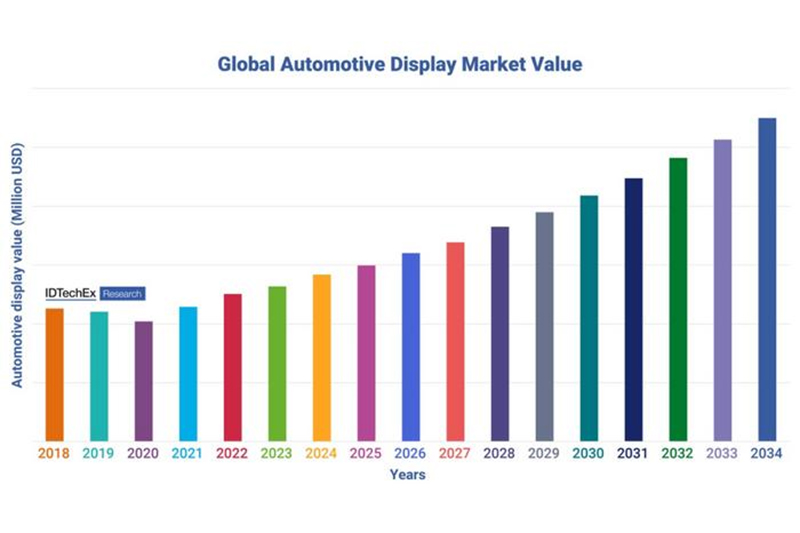The size of a car screen does not fully represent its technological level, but at least it has a visually stunning effect. At present, the automotive display market is dominated by TFT-LCD, but OLEDs are also on the rise, each bringing unique benefits to vehicles.
The technological confrontation of display panels, from mobile phones and televisions to cars, OLED provides higher picture quality, deeper contrast, and larger dynamic range compared to the current main TFT-LCD. Due to its self luminous characteristics, it does not require backlight (BL) and can finely turn off pixels when displaying dark areas, achieving power saving effects. Although TFT-LCD also has advanced full array partition light control technology, which can achieve similar effects, it still lags behind in image comparison.
Nevertheless, TFT-LCD still has several key advantages. Firstly, its brightness is usually high, which is crucial for use in the car, especially when sunlight shines on the display. Automotive displays have higher requirements for diverse environmental light sources, so maximum brightness is a necessary condition.
Secondly, the lifespan of TFT-LCD is generally higher than that of OLED. Compared to other electronic products, automotive displays require a longer lifespan. If a car needs to replace the screen within 3-5 years, it will definitely be considered a common problem.
Last but not least, cost considerations are important. Compared to all current display technologies, TFT-LCD has the highest cost-effectiveness. According to IDTechEX data, the average profit margin of the automotive manufacturing industry is about 7.5%, and affordable car models account for the absolute majority of the market share. Therefore, TFT-LCD will still dominate the market trend.
The global automotive display market will continue to rise with the popularization of electric vehicles and autonomous driving. (Source: IDTechEX).

OLED will be increasingly used in high-end car models. In addition to better image quality, the OLED panel, as it does not require backlighting, can be lighter and thinner in overall design, making it more suitable for various elastic shapes, including curved screens and an increasing number of displays in different positions in the future.
On the other hand, the technology of OLED for vehicles is constantly evolving, and its maximum brightness is already similar to that of LCD. The gap in service life is gradually narrowing, which will make it more energy-efficient, lightweight, and malleable, and more valued in the era of electric vehicles.
Post time: Oct-18-2023

